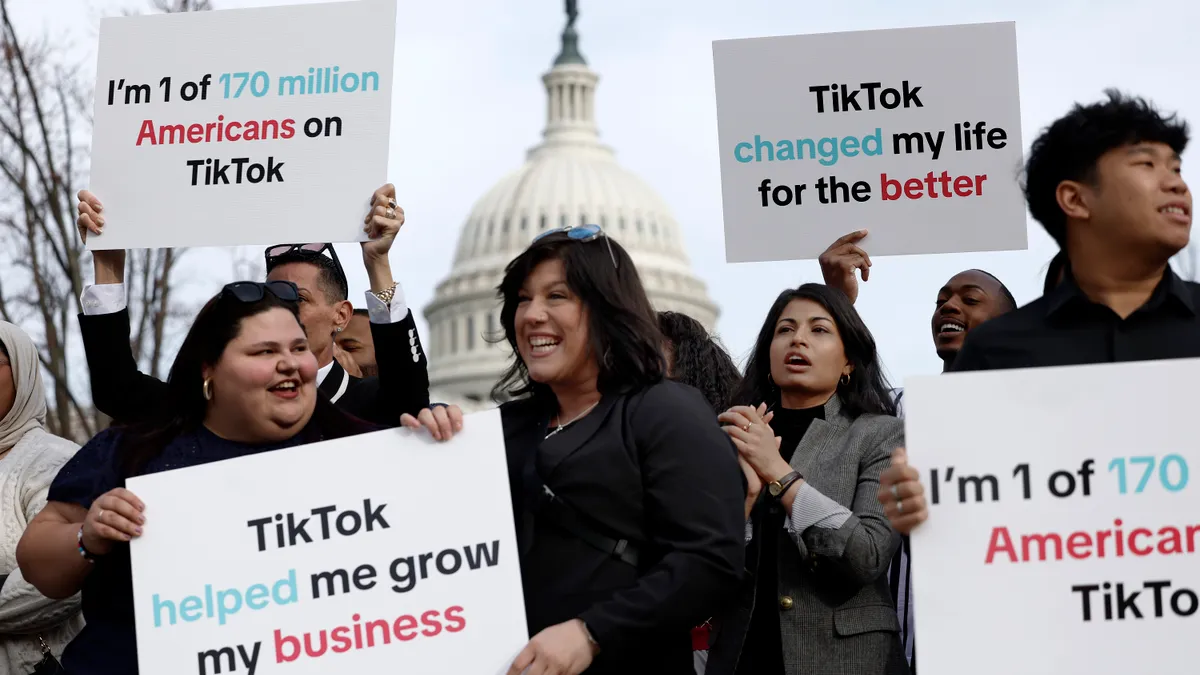Dive Brief:
- Less than half (49%) of marketers’ video advertising budgets will be allocated during this year’s upfronts season, continuing the decline of the annual buying season, according to research shared by Advertiser Perceptions. The percentage represents a 7-point drop from last year’s 56% allocation.
- Culling information from more than 300 executive interviews, the firm found that advertisers expect 40% of their upfront buys will be dedicated to connected TV (CTV) inventory and roughly 29% of buys will be transacted using alternative currencies.
- The hottest topics during the upfronts this year will be return on investment/return on ad spend (ROI/ROAS) and data-driven targeting capabilities, per Advertiser Perceptions. Marketers are most interested in campaign guarantees, while agencies are more interested in programming and content.
Dive Insight:
The upfronts, an annual series of meetings when advertisers commit ad spend in advance of programming scheduled for later in the year, have been losing relevance for some time. Advertiser Perceptions’ latest survey is just another indicator of how the ad-buying process for programming is evolving amid the rise of streaming, shifting schedules and crunched budgets.
Last year’s upfronts period was affected by recessionary fears and global unrest stemming from the Ukraine war, as well as ongoing concerns about media transparency and fragmentation. Those issues remain front and center in 2023 and could have an even bigger impact on advertising plans. While 51% of advertisers increased their upfront spending last year, only 27% in Advertiser Perceptions’ survey intend to increase their spending this year.
“Amid economic uncertainty, advertisers want to keep ad investments more flexible and prioritize the channels that can demonstrate ROI,” said Erin Firneno, vice president of business intelligence at Advertiser Perceptions, in a statement. “Looking forward to this year’s Upfront event, platforms and publishers need to address these core issues — in addition to measurement and targeting capabilities — in their presentations to appease advertisers' concerns and ultimately win their dollars.”
In addition to the impact of external uncertainties, many advertisers are opting to purchase much closer to the air dates rather than hold long-term commitments. This is what happened with this year’s Super Bowl, for which 95% of ads had been sold by September 2022, only to have advertisers sell back inventory, leading to a surge closer to the game, Ad Age reported, citing an unnamed source.
Given the uncertainty, some industry watchers believe a shakeup may be on the horizon for the upfronts. Samba TV CMO Meredith Brace, in an article for Adweek last year, advocated for a “FlexFront” that would allow advertisers to develop alternate plans that could be adjusted as market conditions and consumer attitudes shift.














